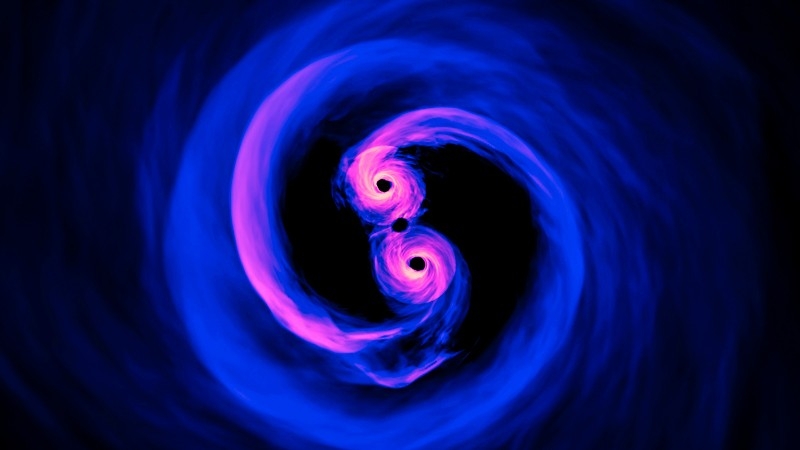Astronomers close in on new way to detect gravitational waves

Supermassive black holes orbiting each other very closely are expected to produce gravitational waves.Credit: NASA’s Goddard Space Flight Center/Science Photo Library
Davide Castelvecchi - Nature
27.1.2022
Astronomers could be on the verge of detecting gravitational waves from distant supermassive black holes — millions or even billions of times larger than the black holes spotted so far — an international collaboration suggests. The latest results from several research teams suggest they are closing in on a discovery after two decades of efforts to sense the ripples in space-time through their effects on pulsars, rapidly spinning spent stars that are sprinkled across the Milky Way.
Gravitational-wave hunters are looking for fluctuations in the signals from pulsars that would reveal how Earth bobs in a sea of gravitational waves. Like chaotic ripples in water, these waves could be due to the combined effects of perhaps hundreds of pairs of black holes, each lying at the centre of a distant galaxy.
So far, the International Pulsar Timing Array (IPTA) collaboration has found no conclusive evidence of these gravitational waves. But its latest analysis — using pooled data from collaborations based in North America, Europe and Australia — reveals a form of ‘red noise’ that has the features researchers expected to see. The findings were published on 19 January in Monthly Notices of the Royal Astronomical Society [1].
See full text